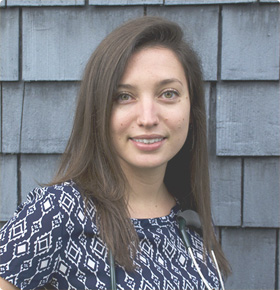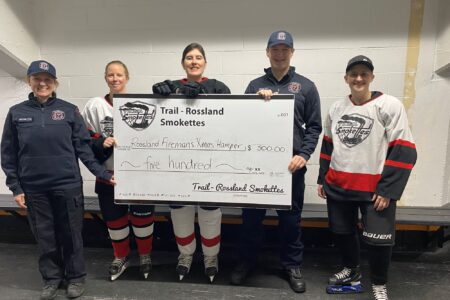COLUMN: Healing strains and sprains naturally
With all of the powder on the ski hill I have been seeing many patients with soft tissue injuries. The following article will give you a brief overview of the different types of injuries, when you should seek medical care, and how to speed the healing process to get you back on the hill!
The difference between a sprain and a strain
A sprain refers to an injury (overstretching or tearing) of a ligament, whereas a strain is an injury to the muscle or tendon. Ligaments attach bone to bone and tendons attach muscle to bone. It is important to know which tissue you have injured because ligaments and tendons have less blood flow than muscles, and therefore take longer to heal.
There are different grades of sprains/strains based on the severity of the injury, but generally it takes 2-3 weeks for a low grade injury to feel better. However, it can take up to 36 months for some ligament injuries to heal completely, therefore following the information below is important to ensure optimal recovery.
Signs that you should seek medical care:
· Go to the ER if you heard a crack, the pain is extreme, the area is numb, discoloured or misshapen, you cannot bear weight at all
· The pain and swelling do not subside in the next 2-3 days
· Your symptoms get worse as time goes on
“MEAT” vs. “RICE”
RICE (Rest, Ice, Compression, Elevation) is a common acronym used when discussing healing soft tissue injuries. The idea behind RICE is to reduce pain and decrease inflammation, however we need inflammation to increase blood flow to the injured tissues (increased blood flow=faster tissue healing). By adding ice and immobilizing sprains and strains, we are moving blood away from the injury and actually slowing the healing process.
The new acronym, MEAT, stands for Movement, Exercise, Analgesics, and Treatments. Movement and exercise increase blood flow, prevent scar tissue from forming, prevent muscles from atrophying, and decrease stiffness. These first two steps obviously must be done with care—don’t push hard enough to re-injure yourself; instead, start with very slow, controlled movements to your pain tolerance. It is difficult to heal if you are in pain, therefore the A stands for Analgesics in this protocol. NSAIDs (aspirin, ibuprofen, naproxen) and corticosteroids block the inflammatory process and are not ideal if you are looking to speed your recovery time. There are many herbs that have analgesic properties such as bromelain (not technically an herb, however it is an enzyme extracted from pineapple), curcumin, and boswelia. Acupuncture and cold pulsed lasers are also excellent tools to decrease pain and increase tissue healing. Other treatments such as physiotherapy and massage therapy can also be very beneficial.
For acute injuries you can use RICE for the first couple of hours, but after that switch to the MEAT protocol for a quicker recovery time.
Speed healing and reduce pain naturally
Foods:
· Fruits and veggies for all of their vitamins and minerals
o We need good nutritional support to heal! Anti-nutrient foods such as sugar, refined flour, white potatoes, and processed foods increase the length of time it will take to heal well.
· Increase your protein
o Protein contains amino acids which are used to build muscles
o Examples of proteins that do not increase the inflammatory load on the body: beans, fish, free range chicken and turkey, eggs, free range red meat (in moderation)
· Foods high in vitamin C
o Vitamin C is used to make collagen, the main component of our ligaments and tendons
o Berries, peppers, kale, tropical fruit such as guava, kiwi and papaya, broccoli, and brussels sprouts are all high in Vitamin C
Physical therapies:
· Acupuncture
o Acupuncture works to accelerate healing on both an energetic and physical level. Physically, inserting acupuncture needles into the tissue increases blood flow and releases endorphins, decreasing pain. Energetically, acupuncture stimulates the flow of qi, releasing energetic blocks.
· Cold pulsed laser
o An extremely effective way to accelerate healing and reduce pain by stimulating mitochondria to create more ATP (adenosine triphosphate), increasing tissue regeneration and cellular repair. All cold pulsed lasers are not created equal, please do your research on the type of cold pulsed laser you are considering to ensure you are getting the best value for your money.
Supplements:
Anti-inflammatory herbs do not suppress inflammation, but work to help modulate it so you experience both decreased pain and faster healing. With any supplement recommendation, please seek professional care before beginning because many natural supplements can interact with medications you may be taking. There are many supplements and herbs that can be used to speed healing and reduce pain, however these are three of my favourites:
· Curcumin
o Modulates inflammation and is a circulatory stimulant. Do not use if you are on blood thinners.
· Bromelain
o A digestive enzyme from pineapple that helps break down fibrin deposits, allowing more oxygen, blood, and nutrients to access the wound. For maximal effect, this should be on an empty stomach (otherwise it will break down your food instead of breaking down the fibrin). Do not use if you are on blood thinners.
· Boswellia
o A herb high in resins that help modulate inflammation, therefore decreasing pain. Boswellia can also be used in chronic pain conditions such as osteoarthritis.
























